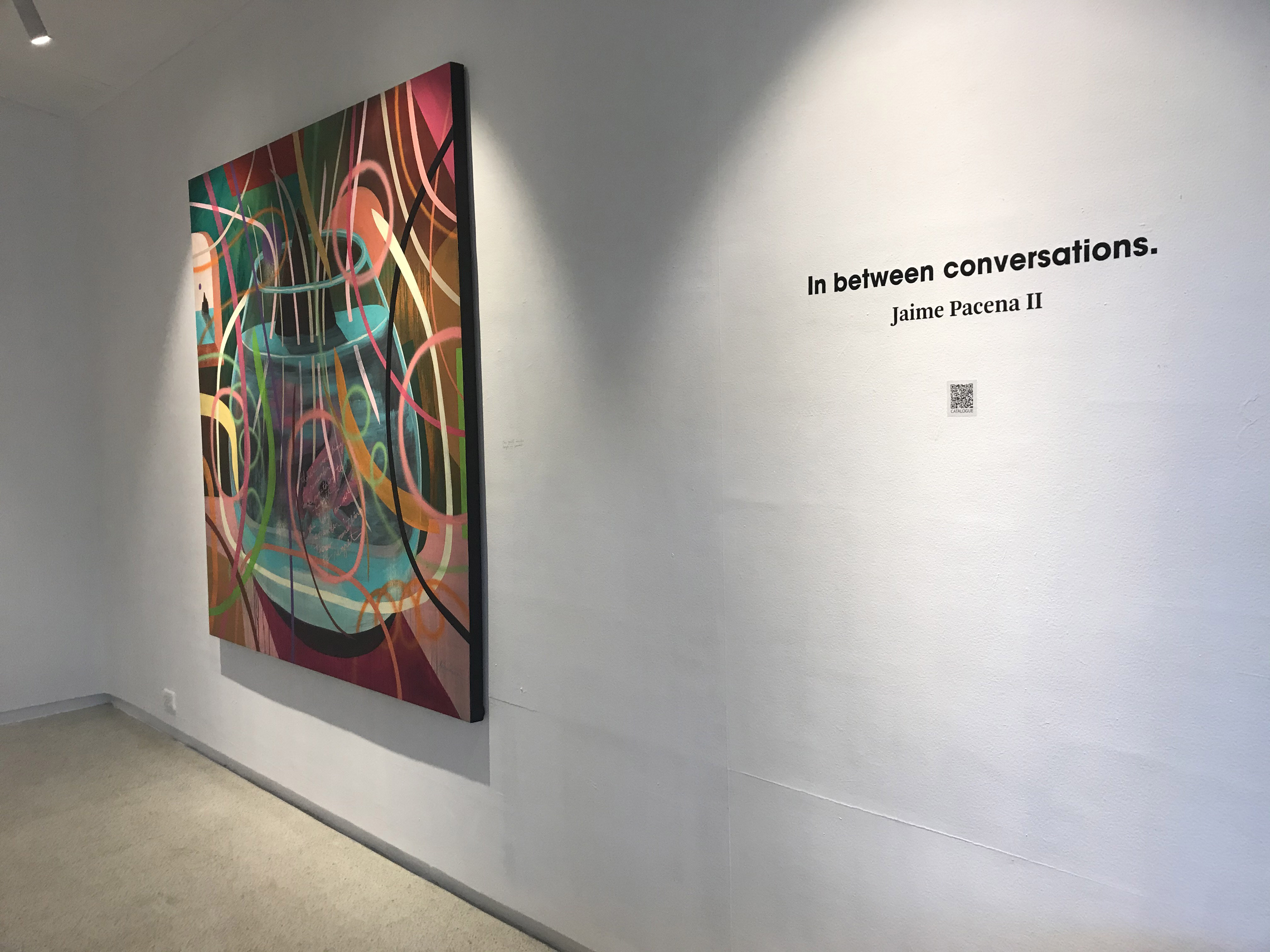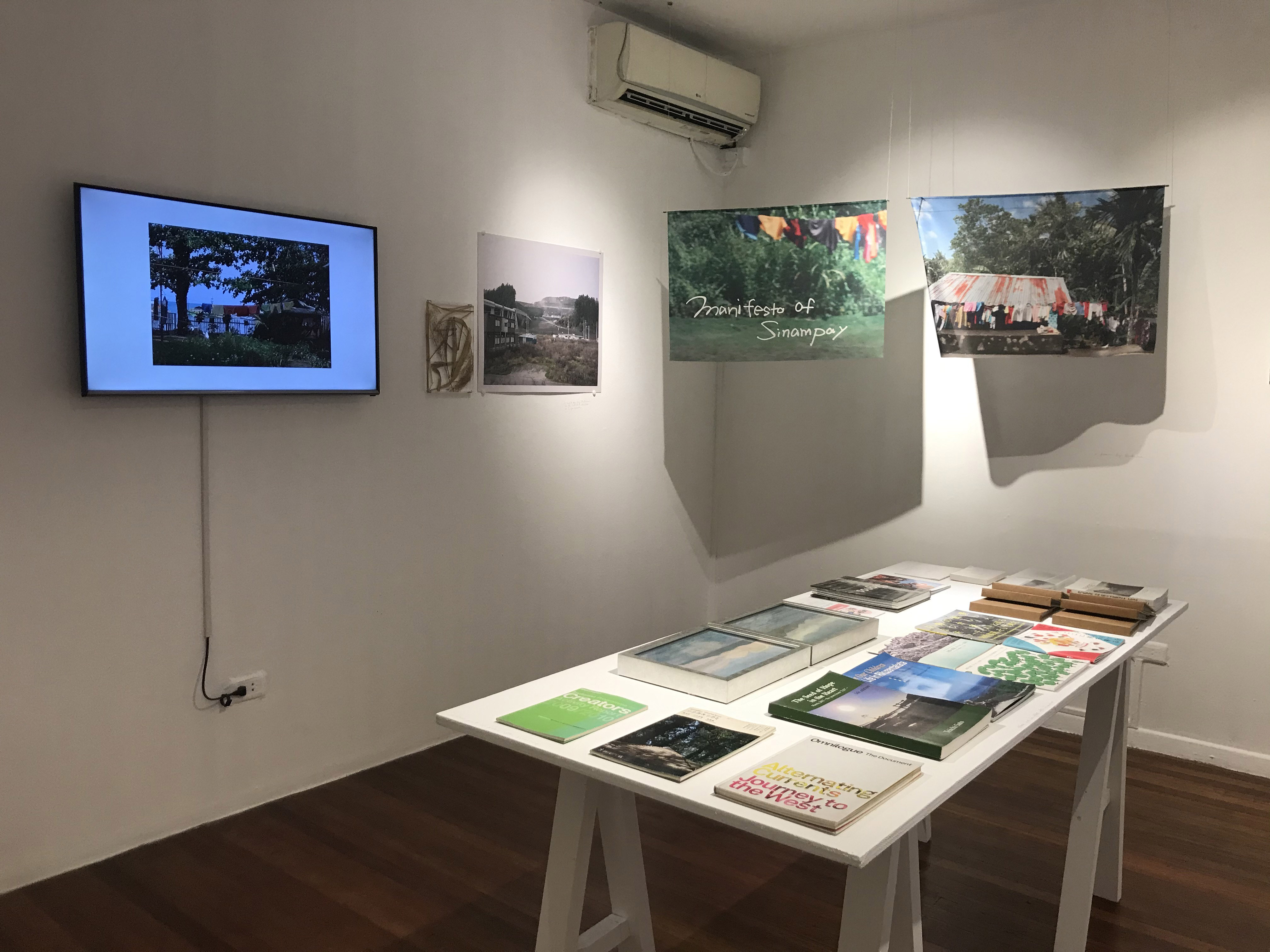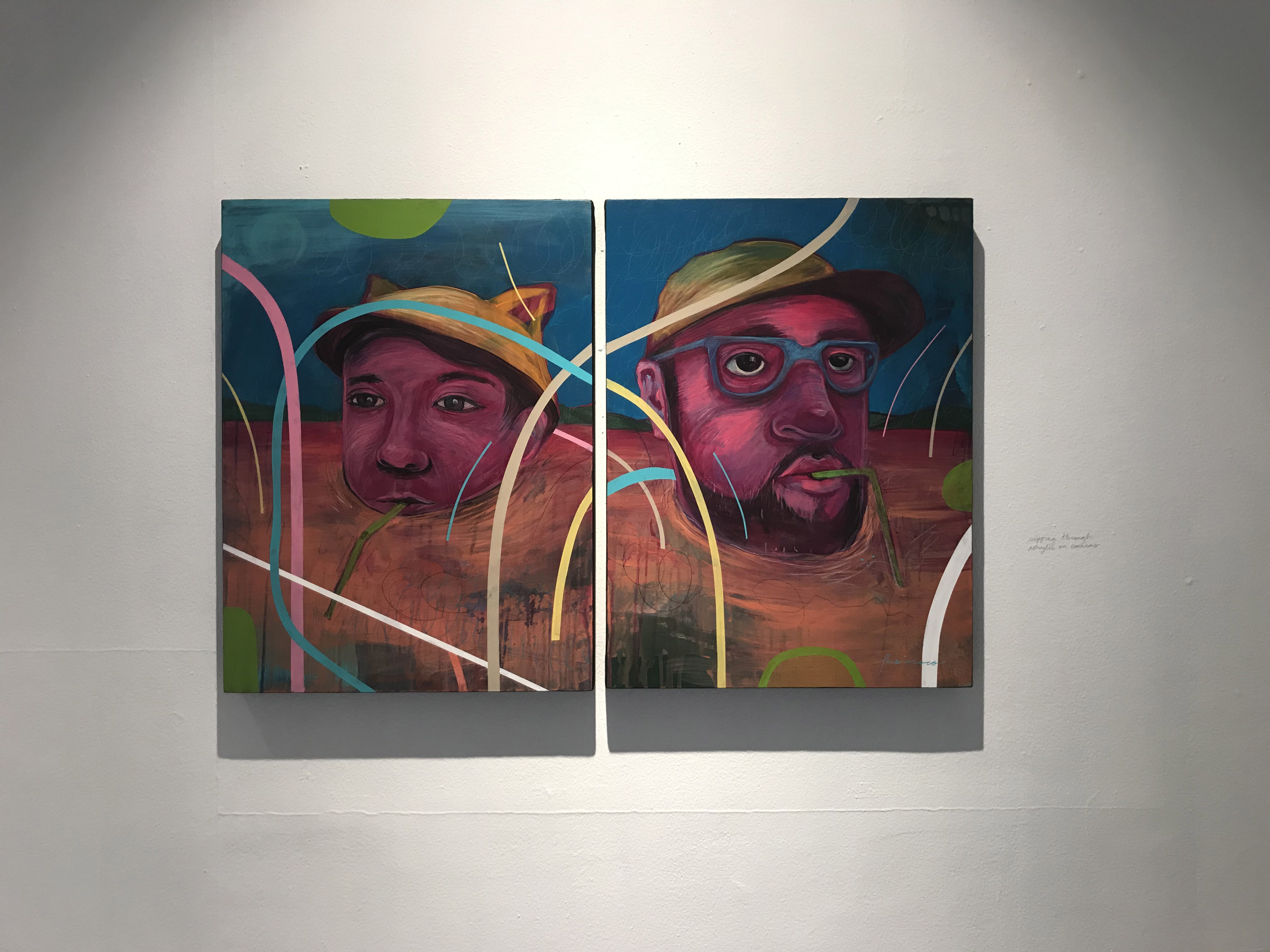In between conversations, there are words, drawings, images, montages, internal dialogues, memoirs and memories. For multidisciplinary artist Jaime Pacena II, there’s art.
Pacena is one of the few Advertising Arts graduates that the University of Santo Tomas has produced and whose practice as a visual artist went beyond the university’s painting tradition.
“I am always fascinated with different types of media. Since graduating in Advertising Arts in 2001, during [that] time, [we’re] exploring the [advent] of digital age, talagang fascinated ako sa mga bagay-bagay that I can do in expressing myself as an artist. I grew up in the age wherein part ng buhay namin ‘yong pag-deconstruct ng transistor radios just to understand how it works,” says Pacena.
“I am always fascinated with different types of media. Since graduating in Advertising Arts in 2001, during [that] time, [we’re] exploring the [advent] of digital age, I was fascinated by a lot things that I can do in expressing myself as an artist. I grew up in the age wherein part of our lives involved deconstructing radio transistors just to understand how it works."
Driven by persistent curiosity, Pacena developed an interest in dissecting the materiality of print and the digital as mediums, and the manner in which the relationship between things and ideas can be translated effectively in other media-based works.
“Magksabay ang pag-explore ko ng video at print media," says the artist. "Sa video ang inaral ko ‘yong storytelling. Sa print media naman ay y’ong mas malayang pag-explore ng material and techniques.”
(“I explored video and print media at the same time. I studied storytelling in videos. In print media, it’s the freedom to explore the material and techniques.”)
The dialogues in between making and introspecting
Spanning more than a decade of artistic and curatorial projects, from 2010 to 2022, In between conversations (Artinformal Gallery, 2022) demonstrates the maturation of Pacena’s practice, from creating to curating his own works and personal archives, as it likewise charts the artist’s creative process of thinking through his own body of work.
This is evident in the multi-channel and on-going video work 'Memoir' which encapsulates ten years of artistic research. The artist records the journey of a train across Japan, and scenes from later on during his travels in other places, in an attempt to produce a kind of dissonance, a seemingly poetic tension between sight and sound.
“For me, this idea of intersections of random clips and sound represent my reflection during that time wherein nakatingin ako sa window, pero iba ang iniisip ko sa nakikita ko at iba din ang naririnig ko sa nakikita ko at naiisip ko. Naging paraan ko siya to show how I felt [while] reflecting”, says Pacena.
(“For me, this idea of intersections of random clips and sound represent my reflection during that time wherein I’m observing from my window, but I’m thinking about things differently from what I’m seeing and I’m hearing things differently from what I’m seeing and thinking about. It has become my way to show how I felt [while] reflecting.”)
The exhibition, representing his practice as a visual artist, as a curator, and as an educator, is divided into three sections, namely: Introspection, Conversation; Memoir and Conversation; and Reverberations. The selection and presentation includes sculptural collages of birds encased in glass, paintings with words and doodles, print on canvas and a single channel video put together as a singular piece, documentary film as visual poetry, dialogues in the form of journals, audio, and photographs, among others.
The sections, when viewed altogether, intersect through the video and moving image works interspersed in each space. The artist expands the idea and articulation of art through archival and research on visual material culture.
“For me, moving image is my way of representing memories and connection in a more accurate way [t]hrough documented clips or even staged shots that represent an idea or an excerpt of a story. In a way archiving a certain emotion or sentiments through a video that is either documented or produced. It became a way for me to extend my personal approach in [sic] art-making by using digital media,” he explains.
Literally and figuratively wearing several hats as an artist-curator
According to Pacena, he wears “many hats, both metaphorically and literally” which is immediately apparent to anyone who meets the artist in person,gets to work with him, or attends one of his his classes.
What seemed to be a very challenging curatorial endeavor back in 2011, when the controversial Kulo exhibition at the Cultural Center of the Philippines was shut down, became a defining moment for Pacena that led him to a deeper understanding of aruga or care, the very essence of curating.
“TUTOK [an artist collective] days pa that time and we are [sic] still being mentored by our seniors. Importante ang paghahayag ng ibig sabihin ng isang piyesa. Dapat din hindi dapat malayo ito sa ginagalawan mo bilang isang creator. The ideology, the sentiments, the meaning lahat ‘yan importanteng malaman mo bilang isang artist or curator man.”
("Those were the TUTOK [an artist collective] days, when we’re still being mentored by our seniors. One thing is that it’s important to express the meaning of a piece. It’s a must that it’s not detached from the world you’re living in as a creator. The ideology, the sentiments, the meaning, it’s important to learn all of those as an artist or even as a curator.”)
Pacena has developed his positionality in art throughout the years and in light of past events. With the guidance of fellow visual artists whom he considers as mentors and friends, such asJose “Bogie” Tence Ruiz, Nestor Vinluan, Karen Flores, Noel Cuizon, Buen Calubayan, and Dayang Yraola, Pacena further honed his practice.
As an artist-curator, he always stands by the advice of his mentor, Tence Ruiz, which gives emphasis to self-awareness: "Yong pag-intindi sa sarili ay pag-intindi sa mundong ginagalawan natin."
("Your understanding of yourself is your understanding of the world you’re living in.")
“I think malaking bagay y’ong practice ko as an artist sa mga ginagawa ko like pagiging curator or video director or educator. Y’ong curiosity ko bilang isang artist starts from within myself. Pagtingin sa mundo, sa mga bagay-bagay that can help me understand others that I work with lalo na sa pagiging curator dahil I feel I understand the sentiments of other artists and how they manage their work,” he adds.
(“I think a big part of my practice as an artist are the other things I do, like being a curator or video director or educator. My curiosity as an artist starts from within. The way I view the world, the things that can help me understand others I work with, especially in being a curator because I feel I understand the sentiments of other artists and how they manage their work.”)
While Pacena has different approaches when he takes on an artistic project, a curatorial project, and a research project, he acknowledges that there’s a thin and overlapping line between that links one discipline to the other. While teaching multimedia arts to college students, Pacena also serves as the curator for CANVAS, a non-profit organization that promotes children’s literacy, and for the Marahuyo Art Projects programmes.
“[A]rt and stories can change the world of children. We focus our messaging in [sic] clear discussions about the environment, [on] why words matter, [on] why human rights and children's rights, on history, on a [sic] safe space[s] lalo na sa Internet (especially on the Internet) and many more,” he states while referring to their vision for CANVAS.
As for the Marahuyo Art Projects, they focus “on the idea that our goal is to converse with young artists and develop an avenue that will highlight their own voice. Focusing more on the process rather than the output.”
With all the different hats he wears, it’s easy to get entangled and neglect the focal point of things. However, by organizing and self-instituting, Pacena proves his capacity to facilitate collaboration as an imperative to the ever-shifting and ever-changing Philippine art landscape.
Catch Jaime Pacena II’s In between conversations at Artinformal Greenhills before October 15, or view the virtual exhibit via their website.
James Luigi Tana is a writer, cultural worker, and an independent curator from the Philippines. He graduated with a bachelor’s degree in Journalism from the University of Santo Tomas and is currently finishing his master’s degree in Art Studies-Curatorial Studies at the University of the Philippines. He served as a Project Manager for the Museum of Contemporary Art and Design in Manila for “Constructions of Truths” (2019), “Haegue Yang: The Cone of Concerns” (2020), “do it” (2021) exhibitions, “Watch and Chill” (2021), “Artists’ Film International: Care” (2021), and “Tropical Climate Forensics” (2022). He participated as a researcher-curator for co.iki’s remote residency programme “Memory and Memoricide of the Land: Reimagining Alternative Model of Museum” in 2021. In the same year, he served as assistant curator for the Manila iteration of “Korea Research Fellow: 10x10”. He was a commissioned writer for Asia-Europe Foundation and winner of the Ateneo Art Gallery-Kalaw Ledesma Foundation Inc. Essay Writing Prize for the non-student category in 2020.
Images courtesy of the writer.





